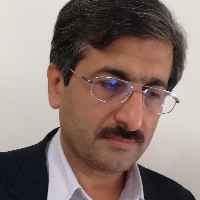The Impact of Social Insurances on Income Inequality in Iran
Author(s):
Abstract:
Problem Design: The existence of massive inequality in income distribution results in poverty and increasing its scope, since for a given level of economic growth, high inequality in income distribution gives rise to creating more gaps among social classes and expanding poverty. So, policy-makers use some instruments including insurance, minimum wage determination and taxing in order to correct income distribution along with economic growth goals. From early 20th century until 1950s, most economists paid attention to increasing economic growth, however, after 1950s especially from 1970s they emphasized on increasing the quality of life with regard to widening income gap among the poor and the rich and also development in public insights. This issue was accompanied first in the rich countries by changing of work laws in favor of labor, providing the considerable welfare services to workers, increasing tax on capital owners and the rich classes and offering social insurances for less income people. Thus, from this viewpoint, the equilibrium generating in income distribution models has become one of the government aims in economic policymaking. Our goal in this paper is to show whether social insurance is an effective instrument to decreasing inequality. In other words, what changes in income distribution occur because of changes in insurance levels?
Method
Insurances such as unemployment insurance, retirement insurance, life insurance and so on, can play an important role in and also affect on income and facilities distribution in the society. In this paper, with reference to existing data and information, the relationship between social insurances and income inequality in Iran is explained using estimation of regression models. Findings
the findings indicate that the Kuznets hypothesis has been violated in Iran. Also, the received premiums of life and non-life insurances result in decreasing inequality. On the other hand, the effect of life insurances on decreasing income inequality is far more than the effect of non-life insurances. The suggestion of current paper for decreasing income inequality and its appropriate distribution is to use the other suitable instruments along with social insurances. Results
The main purpose of this paper is the study of the relationship between income inequality and social insurances in Iran during the period over 1344- 1384. To get this end, after literature review on income inequality and social insurances we construct a model on Kuznets hypothesis base. The results show that promotion of social insurances including life and non-life insurances reduces the incomes inequality. The impact of social insurances on inequality is significant but negligible. In any way, this small effect of rising social insurances on decreasing inequality should not be ignored, since this small effect is important for attaining to optimal income distribution.Keywords:
Language:
Persian
Published:
Social Welfare Quarterly, Volume:8 Issue: 30, 2008
Page:
243
magiran.com/p1243121
دانلود و مطالعه متن این مقاله با یکی از روشهای زیر امکان پذیر است:
اشتراک شخصی
با عضویت و پرداخت آنلاین حق اشتراک یکساله به مبلغ 1,390,000ريال میتوانید 70 عنوان مطلب دانلود کنید!
اشتراک سازمانی
به کتابخانه دانشگاه یا محل کار خود پیشنهاد کنید تا اشتراک سازمانی این پایگاه را برای دسترسی نامحدود همه کاربران به متن مطالب تهیه نمایند!
توجه!
- حق عضویت دریافتی صرف حمایت از نشریات عضو و نگهداری، تکمیل و توسعه مگیران میشود.
- پرداخت حق اشتراک و دانلود مقالات اجازه بازنشر آن در سایر رسانههای چاپی و دیجیتال را به کاربر نمیدهد.
In order to view content subscription is required
Personal subscription
Subscribe magiran.com for 70 € euros via PayPal and download 70 articles during a year.
Organization subscription
Please contact us to subscribe your university or library for unlimited access!



